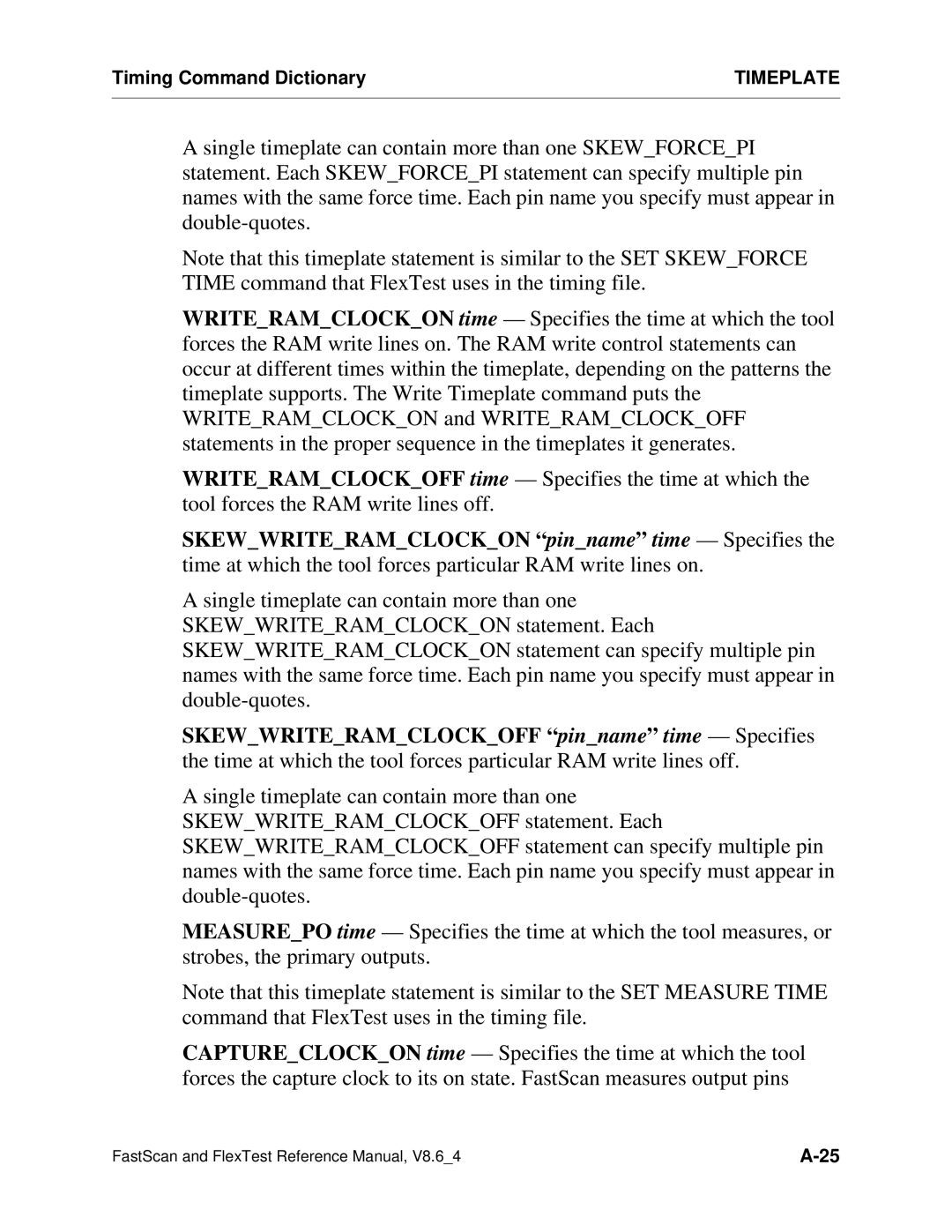Timing Command Dictionary | TIMEPLATE |
|
|
A single timeplate can contain more than one SKEW_FORCE_PI statement. Each SKEW_FORCE_PI statement can specify multiple pin names with the same force time. Each pin name you specify must appear in
Note that this timeplate statement is similar to the SET SKEW_FORCE TIME command that FlexTest uses in the timing file.
WRITE_RAM_CLOCK_ON time — Specifies the time at which the tool forces the RAM write lines on. The RAM write control statements can occur at different times within the timeplate, depending on the patterns the timeplate supports. The Write Timeplate command puts the WRITE_RAM_CLOCK_ON and WRITE_RAM_CLOCK_OFF statements in the proper sequence in the timeplates it generates.
WRITE_RAM_CLOCK_OFF time — Specifies the time at which the tool forces the RAM write lines off.
SKEW_WRITE_RAM_CLOCK_ON “ pin_name” time — Specifies the time at which the tool forces particular RAM write lines on.
A single timeplate can contain more than one
SKEW_WRITE_RAM_CLOCK_ON statement. Each
SKEW_WRITE_RAM_CLOCK_ON statement can specify multiple pin names with the same force time. Each pin name you specify must appear in
SKEW_WRITE_RAM_CLOCK_OFF “ pin_name” time — Specifies the time at which the tool forces particular RAM write lines off.
A single timeplate can contain more than one
SKEW_WRITE_RAM_CLOCK_OFF statement. Each
SKEW_WRITE_RAM_CLOCK_OFF statement can specify multiple pin names with the same force time. Each pin name you specify must appear in
MEASURE_PO time — Specifies the time at which the tool measures, or strobes, the primary outputs.
Note that this timeplate statement is similar to the SET MEASURE TIME command that FlexTest uses in the timing file.
CAPTURE_CLOCK_ON time — Specifies the time at which the tool forces the capture clock to its on state. FastScan measures output pins
FastScan and FlexTest Reference Manual, V8.6_4 |
